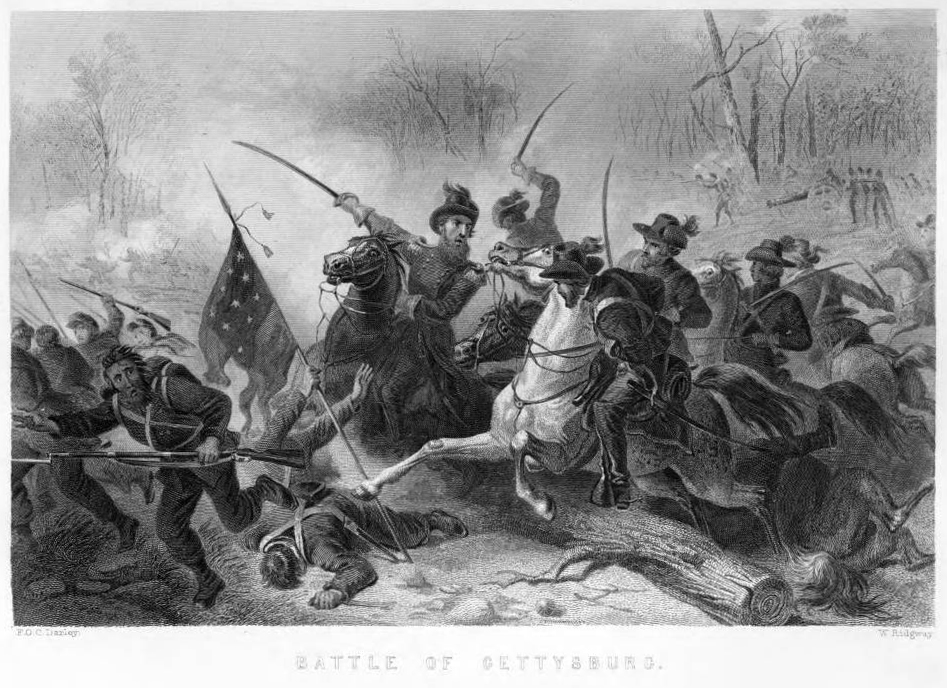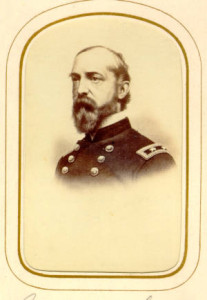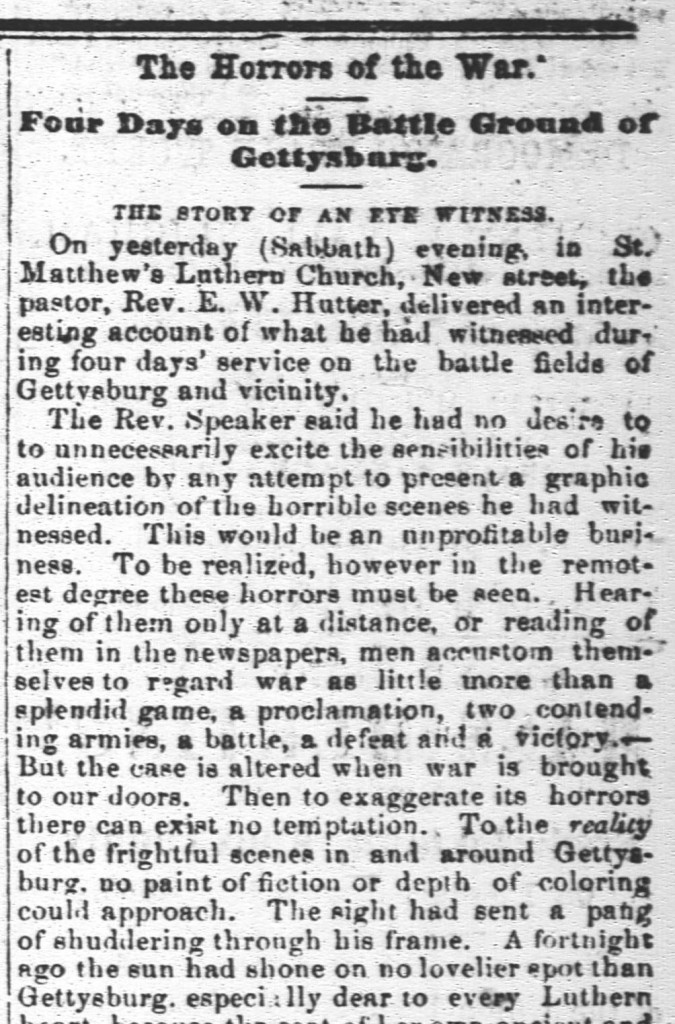“Pity Draws Over It a Veil”


Most Americans have spent this week celebrating our national holiday of Independence Day, but the early days of July also mark a much more solemn anniversary. This past week was the 150th anniversary of the Battle of Gettysburg, a drawn-out and bloody battle that many agree stands today as a major turning point of the Civil War.
It was June of 1863, and General Robert E. Lee and the Confederate Army of Northern Virginia had launched an invasion of the North. On July 1, General George Meade and the Union’s Army of the Potomac met Lee’s forces at the town of Gettysburg, Pennsylvania. Driven through town by the more numerous Rebels, Union soldiers took up defensive positions on Culp’s Hill and Cemetery Ridge, to the south and east of Gettysburg, as Confederate troops took position on nearby Seminary Ridge and prepared for the next day’s fighting.
During the evening, additional Union troops arrived, and Northerners were able to fortify their position by the morning of July 2. Confederate forces assaulted the southern and northern portions of the Union line, but the attacks were not well-coordinated and ultimately failed to breach the strengthened Northern position. On July 3, Lee ordered parts of three Confederate divisions to assault the center of the Union line on Cemetery Ridge–an attack known as Pickett’s Charge. Nearly three-quarters of the Confederate soldiers involved in this attack were killed or wounded. And on July 4, the Army of Northern Virginia began its retreat back to the South.

Numerous Ohioans participated in the Battle of Gettysburg, with at least fifteen Ohio units fighting at the battle. Many historians have labeled this battle (along with the Siege of Vicksburg) as the “high tide” of the Confederacy, but these two decisive defeats for the South ultimately turned the tide of the war toward the eventual Union victory.
Some of the most fascinating materials in Ohio Memory related to this event are found in the Civil War-Era Newspapers of Mount Vernon, which include accounts and reports of the battle in the days and months following. A particularly riveting eye-witness account comes from theMt. Vernon Democratic Banner of August 1, 1863, in which Reverend E.W. Hutter describes “Four Days on the Battle Ground of Gettysburg” as follows:
Through those streets, and over those fertile fields, two ravaging armies have passed, confronting each other not to draw closer the bond of brotherhood, but to renounce it, and hew each other down with murderous weapons…. Thousands of stalwarth men weltering in blood, their bodies mangled, their limbs shattered, and from many almost every vestige of the human form and countenance departed! Humanity shudders at the scene, and pity draws over it a veil.
Ohio Memory has a number of other interesting items related to Gettysburg, including photographs, illustrations, letters, battle flags of Ohio regiments and more. We hope you’ll take some time to explore these collections, and remember this important moment in Ohio (and American) history during the ongoing sesquicentennial commemoration of the Civil War.
Thanks to Lily Birkhimer, Digital Projects Coordinator at the Ohio History Connection, for this week’s post!
**Post has been updated with a new portrait of General Meade.



Leave a Reply
You must be logged in to post a comment.